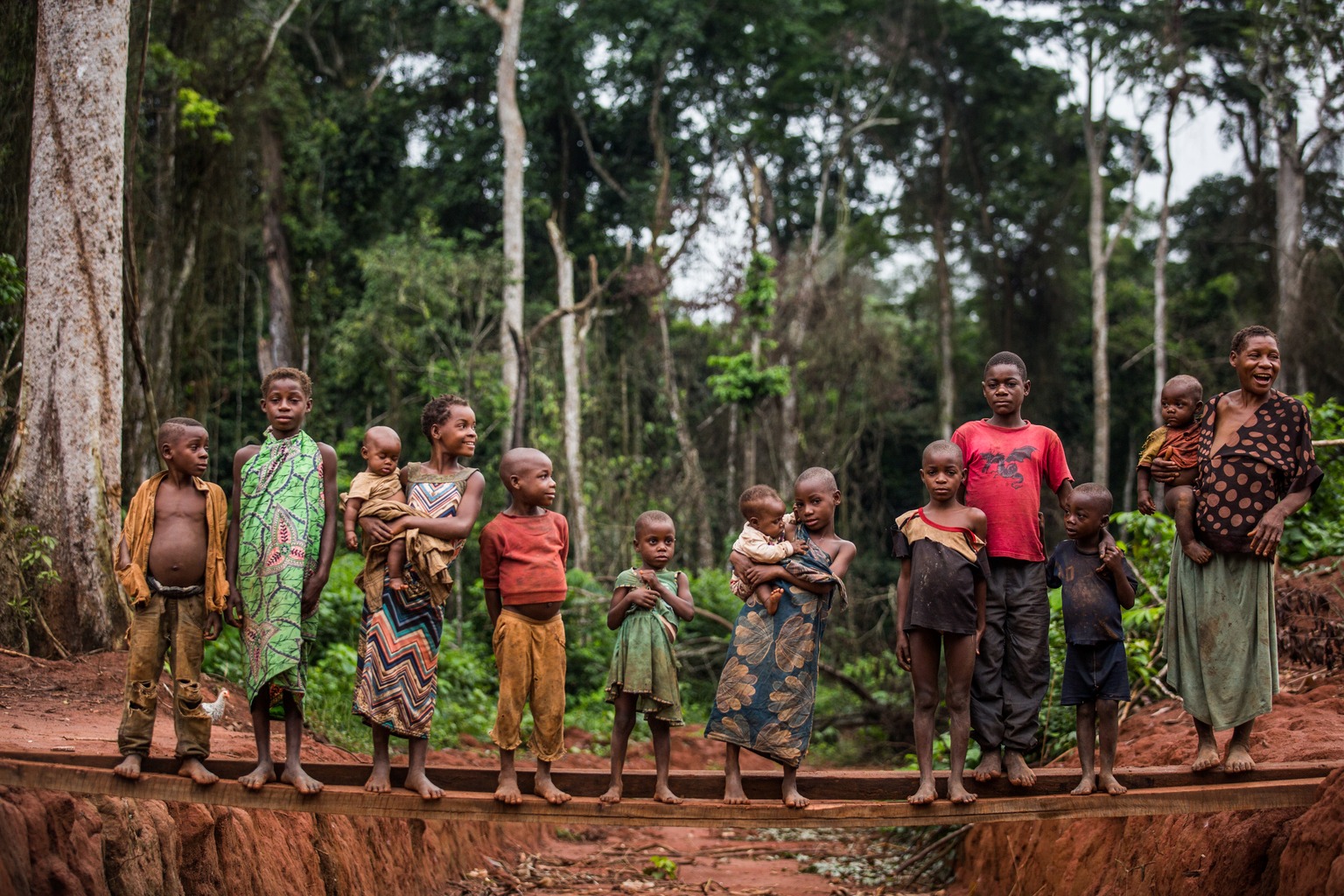Growing child malnutrition driven by poverty, climate change and poor diet, including low breastfeeding rates
UNICEF warns urgent action is needed to fight child malnutrition
*NOTE* UNICEF nutrition specialists and report editors are available for interview

NEW YORK/DUBLIN, 15 October 2019 – An alarmingly high number of children are suffering the consequences of poor diets and a food system that is failing them, UNICEF warned today in a new report on children, food and nutrition.
The State of the World’s Children 2019: Children, food and nutrition finds that at least 1 in 3 children under five – or 200 million – is either undernourished or overweight, suffering from child malnutrition. Almost 2 in 3 children between six months and two years of age are not fed food that supports their rapidly growing bodies and brains. This puts them at risk of poor brain development, weak learning, low immunity, increased infections and, in many cases, death.
“Despite all the technological, cultural and social advances of the last few decades, we have lost sight of this most basic fact: If children eat poorly, they live poorly,” said Henrietta Fore, UNICEF Executive Director. “Millions of children subsist on an unhealthy diet because they simply do not have a better choice. The way we understand and respond to malnutrition needs to change: It is not just about getting children enough to eat; it is above all about getting them the right food to eat. That is our common challenge today.”
The report provides the most comprehensive assessment yet of 21st century child malnutrition in all its forms. It describes a triple burden of malnutrition: Undernutrition, hidden hunger caused by a lack of essential nutrients, and overweight among children under the age of five, noting that around the world:
- 149 million children are stunted, or too short for their age,
- 50 million children are wasted, or too thin for their height,
- 340 million children – or 1 in 2 – suffer from deficiencies in essential vitamins and nutrients such as vitamin A and iron,
- 40 million children are overweight or obese.
The report warns that poor eating and feeding practices start from the earliest days of a child’s life. Though breastfeeding can save lives, for example, only 42 per cent of children under six months of age are exclusively breastfed and an increasing number of children are fed infant formula. Sales of milk-based formula grew by 72 per cent between 2008 and 2013 in upper middle-income countries such as Brazil, China and Turkey, largely due to inappropriate marketing and weak policies and programmes to protect, promote and support breastfeeding.
As children begin transitioning to soft or solid foods around the six-month mark, too many are introduced to the wrong kind of diet, according to the report. Worldwide, close to 45 per cent of children between six months and two years of age are not fed any fruits or vegetables. Nearly 60 per cent do not eat any eggs, dairy, fish or meat.
As children grow older, their exposure to unhealthy food becomes alarming, driven largely by inappropriate marketing and advertising, the abundance of ultra-processed foods in cities but also in remote areas, and increasing access to fast food and highly sweetened beverages.
For example, the report shows that 42 per cent of school-going adolescents in low- and middle-income countries consume carbonated sugary soft drinks at least once a day and 46 per cent eat fast food at least once a week. Those rates go up to 62 per cent and 49 per cent, respectively, for adolescents in high-income countries.
As a result, overweight and obesity levels in childhood and adolescence are increasing worldwide. From 2000 to 2016, the proportion of overweight children between 5 and 19 years of age doubled from 1 in 10 to almost 1 in 5. Ten times more girls and 12 times more boys in this age group suffer from obesity today than in 1975.
The greatest burden of child malnutrition in all its forms is shouldered by children and adolescents from the poorest and most marginalized communities, the report notes. Only 1 in 5 children aged six months to two years from the poorest households eats a sufficiently diverse diet for healthy growth. Even in high-income countries such as the UK, the prevalence of overweight is more than twice as high in the poorest areas as in the richest areas.
The report also notes that climate-related disasters cause severe food crises. Drought, for example, is responsible for 80 per cent of damage and losses in agriculture, dramatically altering what food is available to children and families, as well as the quality and price of that food.
To address this growing malnutrition crisis in all its forms, UNICEF is issuing an urgent appeal to governments, the private sector, donors, parents, families and businesses to help children grow healthy by:
- Empowering families, children and young people to demand nutritious food, including by improving nutrition education and using proven legislation – such as sugar taxes – to reduce demand for unhealthy foods.
- Driving food suppliers to do the right thing for children, by incentivizing the provision of healthy, convenient and affordable foods.
- Building healthy food environments for children and adolescents by using proven approaches, such as accurate and easy-to-understand labelling and stronger controls on the marketing of unhealthy foods.
- Mobilizing supportive systems – health, water and sanitation, education and social protection – to scale up nutrition results for all children.
- Collecting, analyzing and using good-quality data and evidence to guide action and track progress.
“We are losing ground in the fight for healthy diets,” said Fore. “This is not a battle we can win on our own. We need governments, the private sector and civil society to prioritize child nutrition and work together to address the causes of unhealthy eating in all its forms.”
######
For photos, broll, the full report, factsheet, graphs and datasets, click here. After 00.01 GMT 15 October, you can browse the special interactive feature on our website or download the report here.
Notes to Editors:
How breastfeeding helps the mother and child
The benefits of breastfeeding for children and mothers are widespread. It supports healthy brain development in babies and young children, it protects infants against infection, decreases the risk of obesity and disease, reduces healthcare costs and protects nursing mothers against ovarian cancer and breast cancer.
Despite the proven benefits of breastfeeding, the report finds that globally only 42 per cent of children under six months of age are exclusively breastfed and an increasing number of children are fed infant formula. In Ireland, the rates are similarly low, with just 49% of Irish infants are being exclusively breastfed at discharge from hospital. This is far below the 100% of babies UNICEF and the WHO recommend should be exclusively breastfed for the first six months of life.
UNICEF continues to advocate for family friendly policies, such as paid parental leave and breastfeeding breaks, in Ireland and elsewhere around the world.
About UNICEF
UNICEF works in some of the world’s toughest places, to reach the world’s most disadvantaged children. Across 190 countries and territories, we work for every child, everywhere, to build a better world for everyone. For more information about UNICEF and its work for children, visit www.unicef.org.
Follow UNICEF on Twitter and Facebook
For more information, please contact:
Aedín Donnelly, Communications and Media Manager for UNICEF Ireland | aedin@unicef.ie | Tel: +353 1 809 0266 | Mob: +353 85 1395272




